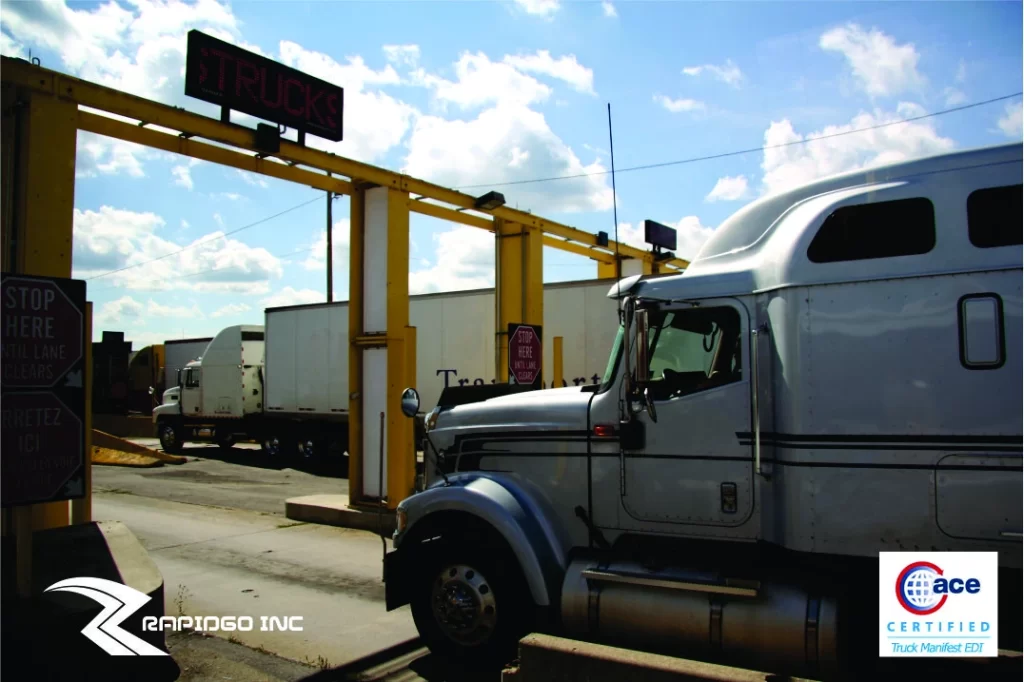
Streamlining Cross-Border Freight in 2025
Introduction Cross-border freight logistics have long been a cornerstone of international trade. With the rise of global commerce and just-in-time delivery expectations, ensuring smooth operations across borders is critical for businesses and logistics providers. In 2025, innovations in technology and streamlined processes like PAPS (Pre-Arrival Processing System) and PARS (Pre-Arrival Review System) are revolutionizing cross-border freight management. In this post, we’ll explore how these systems simplify logistics, enhance compliance, and create new opportunities for efficiency in cross-border freight operations.
What Are PAPS and PARS?
PAPS and PARS are integral systems for expediting cross-border freight shipments between the United States and Canada:
- PAPS (Pre-Arrival Processing System): A U.S. Customs and Border Protection (CBP) system that allows carriers to electronically submit shipment details before arrival at the border. This ensures faster processing and reduces wait times.
- PARS (Pre-Arrival Review System): A Canadian Border Services Agency (CBSA) program that enables carriers to send shipment documentation in advance for pre-approval, allowing seamless entry into Canada.
Both systems rely on advanced digital submissions and unique identifiers (e.g., barcodes) to streamline the customs clearance process. They minimize delays, reduce paperwork, and help businesses meet regulatory requirements with ease in cross-border freight operations.
The Benefits of PAPS and PARS for Shippers and Drivers
In today’s fast-paced logistics world, using PAPS and PARS is no longer optional—it’s a competitive advantage for cross-border freight. Here are the key benefits:
1. Faster Border Clearance
- Advance submission of shipment details reduces processing time at the border.
- Drivers spend less time waiting, ensuring timely deliveries and reduced operational costs.
2. Enhanced Compliance
- These systems ensure adherence to U.S. and Canadian customs regulations.
- Automated processes reduce the risk of human error, avoiding fines or penalties for non-compliance.
3. Improved Transparency
- Both systems provide real-time updates on shipment status, helping shippers and drivers track freight at every stage.
- This transparency builds trust between businesses, logistics providers, and customers.
4. Cost Efficiency
- Faster processing times translate to fewer fuel costs and reduced driver hours spent idle at the border.
- Simplified documentation minimizes administrative expenses.
5. Increased Reliability
- With pre-approved shipments, there’s a lower chance of unforeseen delays, ensuring customers receive their goods on schedule in cross-border freight operations.
How Rapidgo Supports PAPS and PARS Users
At Rapidgo, we’re committed to making cross-border freight logistics as seamless as possible. Here’s how our solutions help shippers and drivers maximize the benefits of PAPS and PARS:
1. Digital Submission Tools
Our platform integrates with PAPS and PARS systems to facilitate the electronic submission of shipment details. You can:
- Generate and submit pre-arrival documentation with ease.
- Receive immediate confirmations, ensuring your shipments are processed without delays.
2. Real-Time Updates
Stay informed with real-time notifications on the status of your shipments. Whether it’s a customs clearance update or a documentation request, our tools keep you in the loop.
3. Expert Support
Navigating customs regulations can be daunting, but our team of experts is here to help. We:
- Provide guidance on PAPS and PARS requirements.
- Assist with troubleshooting and compliance questions.
4. Seamless Integration
Our logistics solutions are designed to integrate effortlessly with your existing workflows. From small businesses to large-scale shippers, Rapidgo ensures that you can focus on delivering value to your customers without worrying about border bottlenecks.
Future Trends in Cross-Border Freight
As we look ahead, several trends are shaping the future of cross-border freight management:
1. Increased Automation
Automation is becoming the backbone of logistics. In 2025, more businesses are adopting technologies that integrate directly with PAPS and PARS systems. This reduces manual input, speeds up processes, and improves accuracy.
2. Blockchain for Transparency
Blockchain technology is being integrated into freight management systems to provide a secure and transparent record of shipments. This ensures accountability and reduces disputes during cross-border freight transactions.
3. AI-Powered Insights
Artificial intelligence is enhancing decision-making by analyzing data from PAPS and PARS submissions. AI tools can:
- Predict potential delays.
- Recommend alternative routes.
- Optimize resource allocation for greater efficiency.
4. Sustainability in Logistics
With a growing emphasis on sustainability, logistics providers are seeking eco-friendly solutions. Reducing idle times at borders through streamlined processes like PAPS and PARS contributes to lower emissions and fuel consumption.
5. Strengthened Trade Agreements
As trade relationships between the U.S. and Canada evolve, policies supporting smoother cross-border freight logistics are likely to emerge. Businesses that leverage PAPS and PARS will be well-positioned to adapt to these changes.
Conclusion
In 2025, the importance of efficient cross-border freight logistics cannot be overstated. Systems like PAPS and PARS are transforming the industry, offering faster clearance times, enhanced compliance, and greater reliability. With Rapidgo’s cutting-edge tools and expert support, businesses and drivers can maximize the benefits of these systems, ensuring smooth operations and satisfied customers.
Ready to streamline your cross-border freight? Discover how Rapidgo can help you succeed with PAPS and PARS solutions. Contact us here to get started or get answers to your questions.